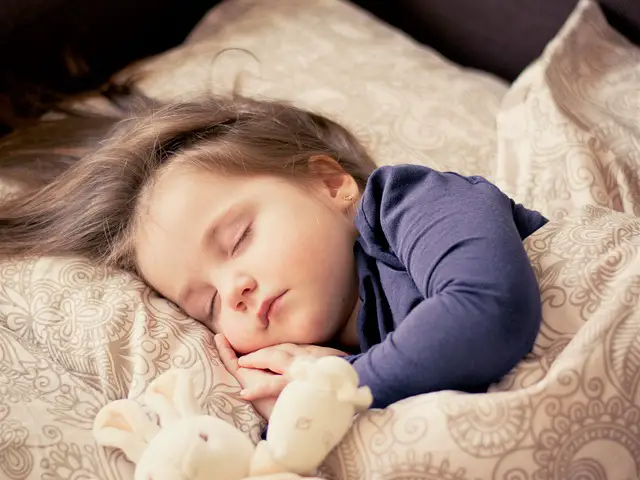Can Kids Wear Contacts

Many kids want to make a fashion statement by wearing contact lenses. It is important to note that, while contacts are a great way to enhance one’s look, they may not be suitable for young children. Kids should only wear contact lenses if they have been professionally fitted and prescribed by an eye care professional. In this article, we will discuss the potential risks of contacts and provide helpful tips for parents whose children are interested in wearing them.Yes, children can wear contact lenses. However, it is important that they are fitted and prescribed by a qualified optometrist who is experienced in fitting lenses on children. Contacts must be cared for properly to avoid the risk of infection or irritation. Children should also be taught how to properly insert, remove and care for their lenses.
At What Age Can Kids Wear Contacts?
Children of any age can wear contact lenses, although there are special considerations when it comes to kids. Generally, the American Optometric Association recommends that children should be at least 12 years old before they start wearing contacts. This is because children’s eyes are still developing, and contacts may interfere with that process. Additionally, younger children may struggle with the responsibility of keeping their contacts clean and inserting and removing them properly.
Before kids can wear contacts, they should have a comprehensive eye exam to make sure their eyes are healthy enough for contact lenses. Kids who wear glasses often need to make sure their prescription is up-to-date before transitioning to contact lenses. Once the doctor approves a child for contacts, parents should take time to teach their kids how to properly care for them.
Parents and kids should also understand that contact lenses do not always eliminate the need for glasses or corrective eyewear. Most eye doctors recommend that all contact lens wearers also have a pair of glasses on hand in case there are any complications with the lenses or if they need a break from wearing them.
It is important for parents and kids to understand the risks associated with contacts if they are not properly cared for. Infections can occur if the contacts aren’t cleaned regularly or if kids don’t wash their hands before handling them. Even minor infections can lead to permanent damage in some cases, so it is important that children follow doctor’s instructions when it comes to caring for their contacts.
Overall, most eye doctors suggest waiting until at least 12 years old before allowing children to wear contact lenses but this may vary on a case-by-case basis depending on your child’s vision needs and maturity level.
What Are The Benefits Of Contacts For Kids?
Contacts are becoming an increasingly popular choice for vision correction in children. While glasses can be a good option for children with vision impairments, contacts offer a number of distinct advantages that make them an attractive alternative. Contacts provide improved comfort, better peripheral vision, and greater aesthetic appeal when compared with glasses.
Comfort is one of the key benefits offered by contacts. Kids who wear glasses can often experience discomfort due to the weight of the frames on their nose and ears. Contacts are much lighter and less likely to cause irritation or discomfort. This makes them particularly suitable for active children who play sports or engage in other physical activities.
Another benefit of contacts is that they provide better peripheral vision than glasses do. With glasses, portions of your peripheral vision can be blocked by the frames. This can lead to problems with depth perception and impaired spatial awareness. Contacts eliminate this problem because they are directly placed on the eyes and do not impede your field of view in any way.
Finally, contacts offer superior aesthetic appeal when compared to glasses. Many children feel self-conscious about wearing glasses and may be reluctant to wear them in public or at school due to concerns about how they look. Contacts allow kids to maintain a natural appearance without having to worry about being embarrassed by their eyewear.
Overall, there are many benefits of contacts for kids that make them an attractive option for vision correction. They are more comfortable than glasses, provide better peripheral vision, and offer a more natural aesthetic appeal than eyeglasses do.
What Are The Risks Of Contacts For Kids?
Contacts are a great alternative to glasses, however there are risks associated with contacts for kids. Although contacts offer convenience and a more natural vision, improper use or care of lenses can lead to infection and other eye issues. One of the biggest risks associated with contact lenses is an infection known as corneal ulcer. This is caused when bacteria gets into the eye through the contact lens and causes damage to the cornea. Other potential risks include allergic reactions, irritation, dry eyes, and vision distortion.
It is important that kids understand how to properly wear and care for their contact lenses in order to avoid these risks. They should be taught how to insert and remove their contacts properly, as well as how to clean them regularly and store them safely. It is also important for kids to understand the importance of regular eye exams by an optometrist, as this can help identify any problems before they become more serious or cause further damage.
In addition, it is important for parents to monitor their kids’ use of contacts to ensure they are using them correctly and taking proper care of them. If any signs or symptoms of irritation or infection appear, it is important to seek medical attention immediately in order to prevent long-term damage. With proper care and supervision, contacts can be a safe option for kids who need vision correction.
Types of Contact Lenses for Kids
Contact lenses are an increasingly popular choice for children with vision problems. They come in a variety of types that are designed to meet the needs of different ages and levels of vision correction. Here are some of the most common types of contact lenses available for kids:
Soft Contact Lenses
Soft contact lenses are the most popular type of lens for kids. They are made from a soft, flexible material that allows oxygen to pass through to the eye. Soft contact lenses come in both single-vision and multi-focal designs, so they can be used to correct both nearsightedness and farsightedness. These lenses may also be used on a daily, weekly, or monthly basis depending on the prescription prescribed by an optometrist.
Gas Permeable Contact Lenses
Gas permeable contact lenses are made from a rigid material that provides superior oxygen permeability compared to soft contacts. This type of lens is more durable than soft contacts and is ideal for children who play sports or participate in activities that require eye protection. Gas permeable contacts also provide improved vision clarity and better vision correction than soft contact lenses.
Extended Wear Contact Lenses
Extended wear contact lenses allow children to wear their contacts overnight without having to remove them each day. These lenses are made from a highly oxygen permeable material that allows oxygen to pass through even when worn continuously. The ability to wear these contacts overnight makes them an ideal option for children who have difficulty removing and inserting their contacts each day.
Disposable Contact Lenses
Disposable contact lenses offer convenience and cost savings over traditional contact lenses. These lenses can be worn on a daily basis and then discarded at the end of each day, eliminating the need for cleaning and storage solutions. Disposable contact lenses come in both soft and gas-permeable designs, making them suitable for all types of vision correction needs.
Overall, there is a wide range of contact lens options available for kids today, making it easier than ever before for parents to find the right solution for their child’s vision needs. It’s important to consult with an eye care professional before selecting any type of contact lens so you can ensure your child will receive the best possible results from their new eyewear solution.

How To Care For Contact Lenses In Kids
Caring for contact lenses in children can be a tricky but rewarding experience. As a parent, it is important to make sure that your child knows the proper steps to cleaning and storing their contact lenses. To help make this process easier, here are a few tips on how to best care for contact lenses in kids.
The first step to caring for contact lenses in children is making sure that they wash their hands before handling the lenses. This will help reduce the risk of introducing bacteria and other contaminants onto the lenses. Additionally, it is important that they use fresh contact lens solution each time they clean their contacts. This will help ensure that the lenses are free from any debris or build-up that may have occurred during wear.
Once the contacts have been washed and stored properly, it is important to check them regularly for any signs of damage or buildup. If there is any discoloration or cloudiness on the lens, it is important to replace them immediately to ensure proper vision and comfort while wearing them. Additionally, it is important to keep track of when your child’s contacts need to be replaced so that they do not become dry or uncomfortable over time.
Finally, it is important that your child knows how to properly store their contact lenses overnight and when not in use. Depending on what type of lens they are using, there may be specific instructions from the manufacturer about storage and cleaning methods for their particular type of lens. Additionally, if your child wears daily disposables, make sure they discard each pair after one day’s wear as instructed by their eye care professional.
By following these simple steps you can ensure that your child’s contact lenses are properly cared for and safe while being worn. With proper care and maintenance, contact lenses can provide clear vision for many years without any discomfort or complications!
How To Get Children Used To Wearing Contacts
Getting children used to wearing contact lenses can take some time and patience, but with the right approach, it can be a rewarding experience. The first step is to make sure your child is comfortable with the idea of wearing contacts. Explain to them why they need to wear them and how they will help their eyesight. It’s also important to discuss the proper hygiene measures that must be taken when wearing contacts, such as washing hands before handling lenses, following the lens replacement schedule and properly storing lenses in a case with fresh solution.
The next step is choosing the right contact lenses for your child’s eyes. Talk to your ophthalmologist about which type of lens is best for your child’s eyes and lifestyle – there are many options available including soft, disposable and gas-permeable lenses. Once you have chosen the right lenses for your child, teach them how to properly insert and remove their contacts safely under your supervision.
Finally, it’s important to ensure that your child feels comfortable wearing their contacts. Make sure they wear them for short amounts of time at first until they get used to having them in their eyes. Encourage them by praising their efforts and providing positive reinforcement as they progress in becoming accustomed to wearing contact lenses. With patience and practice, your child will be able to enjoy all the benefits of wearing contacts in no time!
Teaching Children About Wearing Contacts Safely
Wearing contacts is a safe and popular way to correct vision, however it is important to teach children how to wear them properly. Contact lenses should be worn correctly and only under the advice of an eye doctor. Here are some tips on teaching children about wearing contacts safely:
Encourage your child to be responsible when it comes to taking care of their contacts. Show them how to clean and store the lenses properly, as well as how often they need to replace them. Make sure that your child understands the importance of proper hygiene, such as washing their hands before handling the lenses.
Explain the importance of following their eye doctor’s instructions for contact lens use. This includes not wearing lenses for too long or sleeping in them. Make sure they understand that not following instructions could lead to uncomfortable side-effects like dry eyes or irritation.
Make sure your child knows how to recognize if something is wrong with their contact lenses. Teach them to take out their contact lenses immediately if they experience any pain, redness, or discomfort while wearing them. This could indicate an infection or other issue that needs immediate attention from an eye doctor.
Finally, remind your child of the importance of regular eye exams when wearing contacts. Eye exams are necessary in order to ensure that your child’s vision is still within a healthy range and that their contact lenses are still fitting properly for optimal comfort and safety.

Conclusion
Children can benefit from wearing contact lenses, but it is important to ensure that they are properly fitted and monitored. Wearing contacts can improve a child’s vision, self-esteem and overall quality of life. However, parents should be aware of the risks associated with contact lens wear in children and take steps to minimize those risks. It is recommended that children receive regular eye exams to ensure their eyes are healthy and that their contacts fit properly. With the proper supervision and guidance, children can safely wear contact lenses and enjoy the improved vision they provide.
Parents should always consult with their child’s doctor or optometrist before deciding whether or not to allow a child to wear contact lenses. While there are potential risks associated with contact lens wear in children, these risks can be minimized with proper monitoring and supervision. With the right guidance and care, children can safely wear contact lenses and enjoy an improved quality of life.
